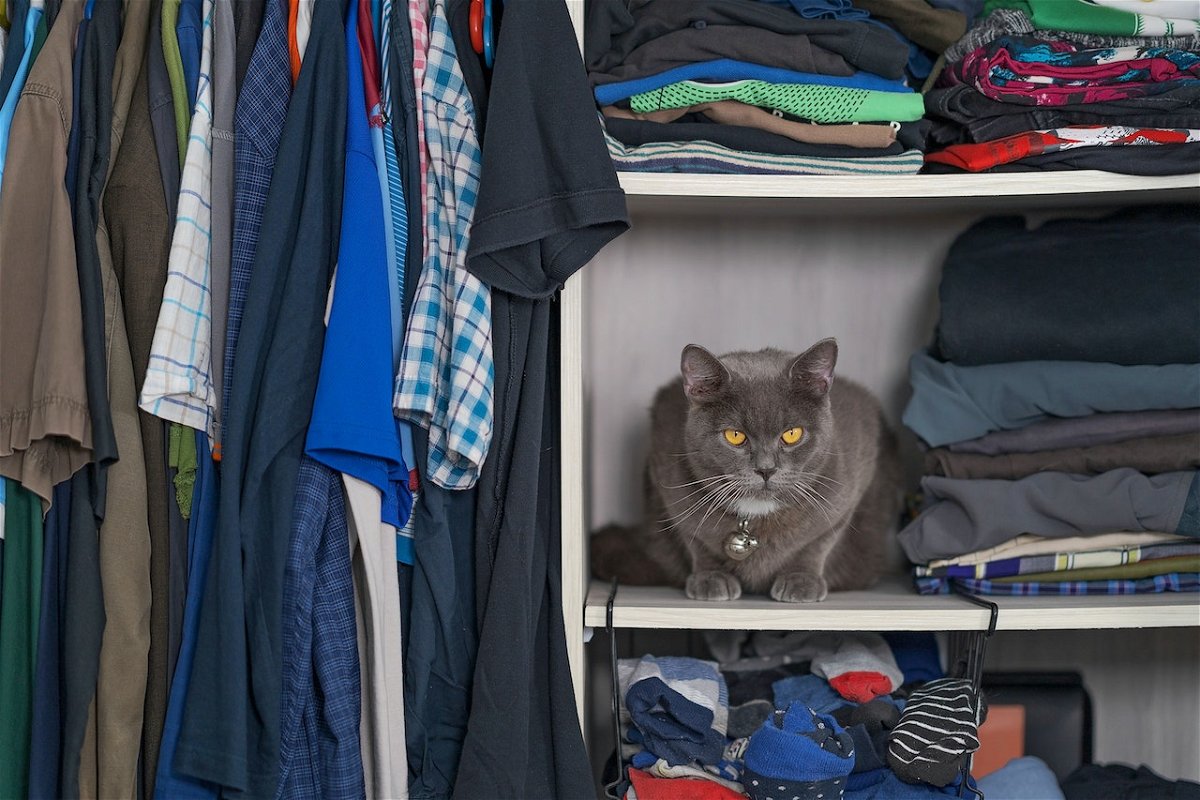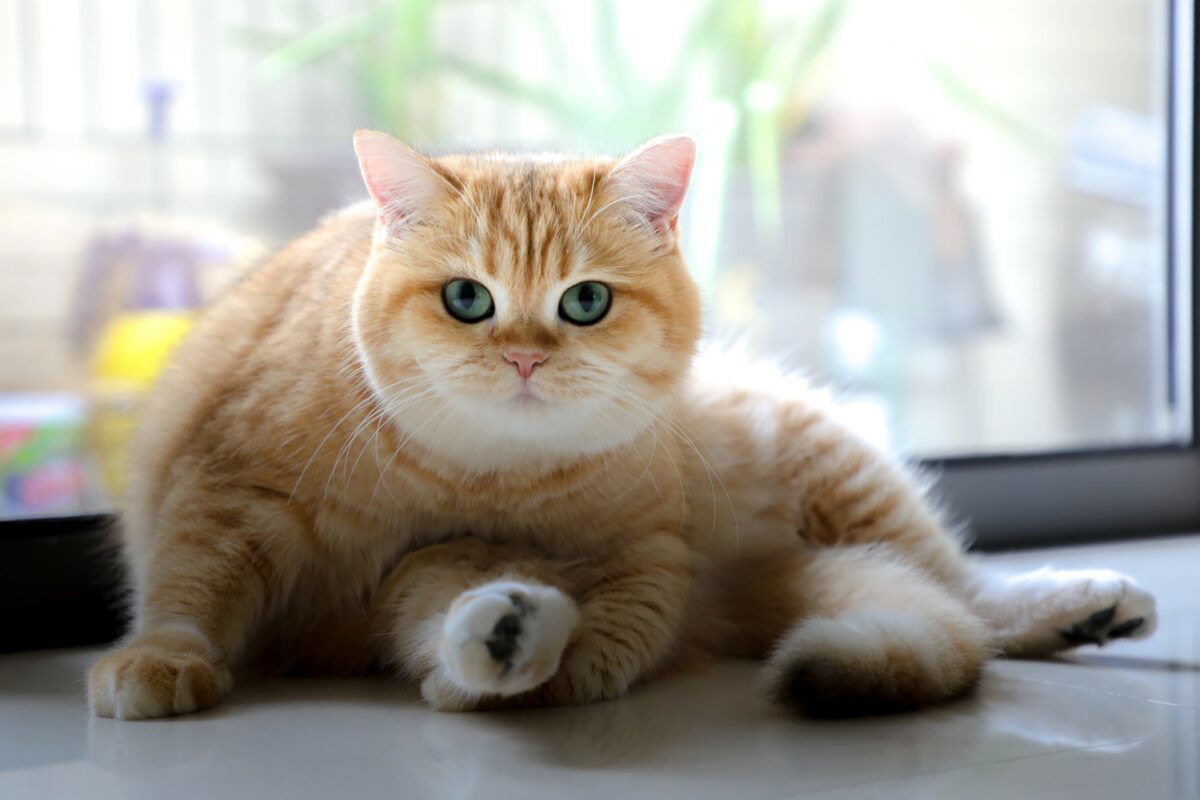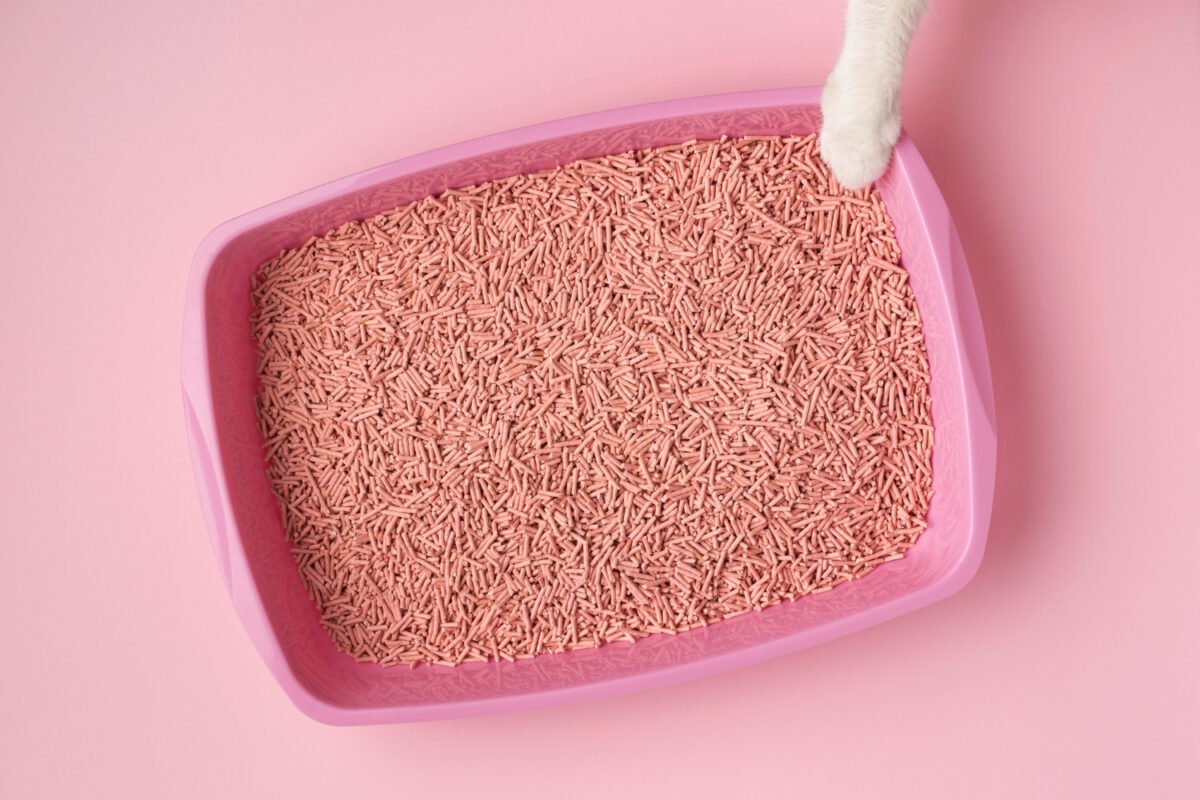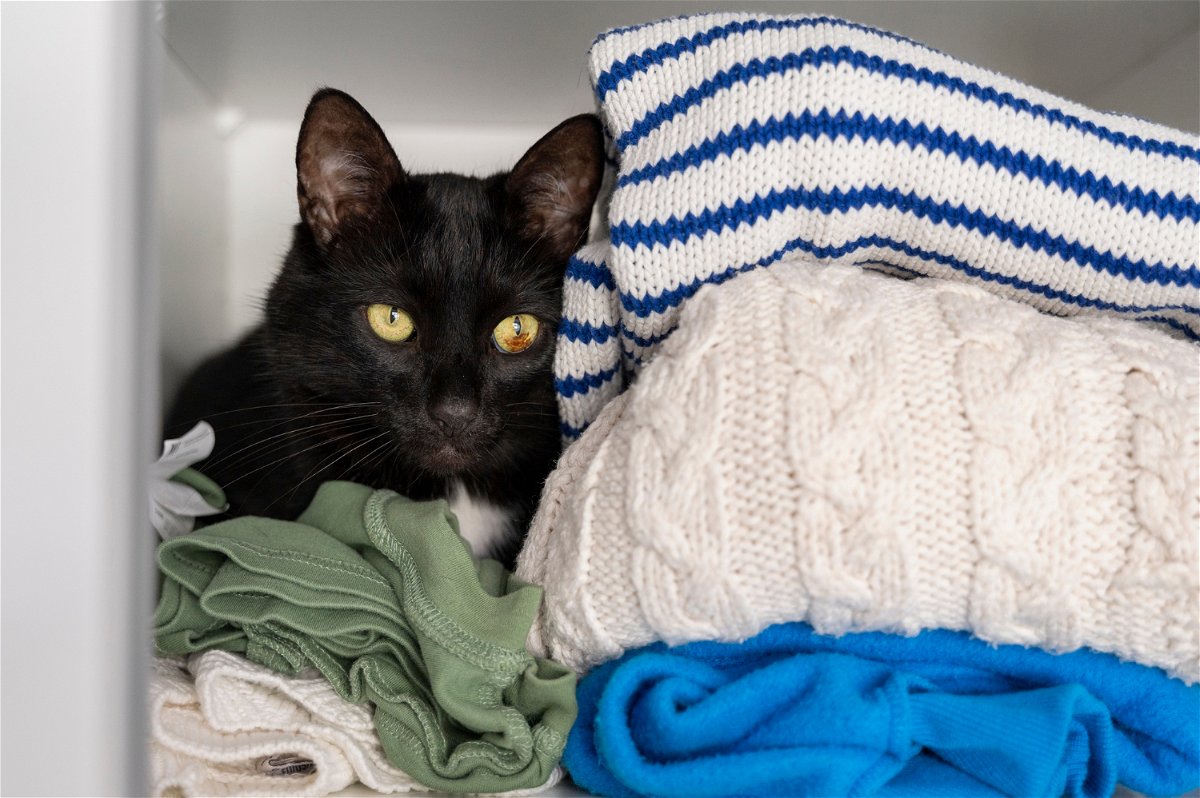We're an affiliate
We hope you love the products we recommend! Just so you know, we may collect a share of sales or other compensation from the links on this page at no additional cost to you. Thank you if you use our links, we really appreciate it!
Has your cat just peed on your clothes? Our feline friends are known for their mysterious set of behaviors which may sometimes leave us puzzled and frustrated.
So, why does your cat pee on your clothes?
Maybe there’s something wrong with their litter box, or are they peeing on your laundry pile because of a deep-seated grudge?
Several likely reasons can make your beloved feline develop this behavior, ranging from behavioral issues, and medical issues, to environmental issues.
In this post, we’ll take an in-depth look into the possible causes of this cat behavior and the practical steps you can take to rectify the situation and your clothes stain-free.
Do Cats Pee Out of Malice?
Before we delve into the main topic of our discussion, it is important to address a common misconception that has been flying around.
Some people believe that cats can pee on their clothes or personal belongings because of spite or resentment.
It’s important to understand that cats don’t have the complex emotional nature that breeds revenge and resentment, similar to what humans may show.
We should interpret such behavior as part of the wider feline language, which can indicate various issues affecting your lovely cat.
Why Does My Cat Pee on My Clothes?
Several reasons may prompt your cat to pee on your clothes. We categorized them into behavioral, medical, and environmental:
I. Behavioral Causes
1. Stress and anxiety
Just like humans, cats are prone to suffer stress and anxiety from time to time. This emotional imbalance can cause them to engage in different behaviors that express their inner feelings.
Your feline friend may leave a puddle of urine on your laundry heap because of emotional distress and anxiety.
Various activities can cause your cat to sink in stress, some of which include moving to a new home, introducing another cat, welcoming a newborn, or simply switching their diet abruptly.
It’s important that pet parents learn how to interpret feline body language to get a clear glimpse of what they’re trying to communicate.
Some of the other signs of stress and anxiety in cats include; hiding, excessive urination, overgrooming, and changes in appetite among others.
2. Comfort
The pile of laundry sitting in the corner of your bedroom is a perfect spot for comfort and relaxation for cats.

Your clothes are filled with your unique scent, something which reassures your feline friend about your presence despite being away from home.
Your furry friend may seek to intertwine your scent with their urine to create a strong connection with you and foster a sense of familiarity.
3. Seeking your attention
It’s also possible that your cat is urinating on your clothes as a way of calling for your immediate attention.
This is most likely to be done by housecats who feel like they don’t receive the required love and affection from their human caregivers.
Some cats may crave more attention than we can actually give them, so this doesn’t necessarily mean that you’re not there for your kitty.
It could also mean that your cat has figured out that they can get quick attention from you simply by urinating on your belongings.
In this case, this is a reinforced behavior that has been ingrained in the cat’s ways to seek attention from those they love.
4. Marking territory
Dogs are widely known for urinating on specific areas to mark them as their own, but did you know that our feline friends do this too?
When your cat urinates on your clothing, they’re leaving behind small amounts of chemical signals that communicate to other cats that the area has been claimed.
This is a warning to their feline housemates to back off and desist from encroaching into their personal spaces.
Cats who urinate to mark territory will usually leave small amounts of urine on the claimed spots.
If your cat leaves a huge puddle on your clothes, then this might not be an effort to claim territory.
Your cat may be instigated to mark territory when they perceive threats within your house. This could be an introduction of a new pet or encroachment of their designated areas.
II. Medical Causes
Sometimes your cat may pee on your clothes because of medical reasons and not behavioral ones. This should be more concerning and needs immediate attention from a qualified vet.
The following are some of the cat health problems that may cause your furbaby to break from their routine toileting habits:
1. Kidney diseases
Some cats are at a heightened risk of suffering kidney diseases especially as they advance in age. Problems with the kidneys can cause a build-up of toxins in the cat’s body leading to frequent urination.
The kidney’s main function is to clear toxins from the blood, and if they’re hampered in their functions, the toxins will increase and cause the affected cat to get ill.
Cats with kidney diseases may find it difficult to reach the litter box in time due to the sudden urge, leading them to choose the nearest comfy place, which is often your laundry basket.
Some of the other symptoms of kidney diseases in cats include:
- Decreased interest in food
- Pale gums
- General body weakness
The more the toxins build up in your cat’s system, the more the chances of increased complications. You should always check with your vet if you suspect kidney-related conditions.
2. Feline Lower Urinary Tract Disease (FLUTD)
Lower urinary tract diseases in cats are a group of conditions ranging from mild to serious that affect the urethra and bladder.
Cats with FLUTD can show various symptoms including frequent urination, serious pain, and discomfort while urination.
This condition inflames the inner lining of the cat’s bladder making them get the urgent urge to urinate frequently than usual.
FLUTD is commonly caused by a bacterial infection known as infectious cystitis. Struvite stones and urethral obstruction are examples of non-infectious causes of this condition.
If left unchecked, FLUTD can develop into bladder stones which can be very painful and cause severe effects.
3. Thyroid diseases
The two thyroid glands, located around the neck area, play a crucial role in your cat’s health including urination habits.
Fully functional thyroid glands in cats help regulate the production of hormones and metabolic functions throughout the body.
An overactive thyroid, a condition known as hyperthyroidism, or underactive thyroid, also called hypothyroidism, can cause a wide range of issues in cats including increased urination.
It’s important to check the level of your cat’s thyroid hormones at your local vet’s office through a simple blood work.
Your vet will recommend prompt treatment options if your cat is found to have an imbalance in their thyroid hormone levels.
4. Diabetes
Diabetic cats may urinate more than usual because they need to regulate blood sugar levels. If your cat leaves large puddles of urine in your laundry basket, then this could be a sign of diabetes.

If your furry friend is diabetic, they may associate the discomfort of high blood sugar levels with their litter box, causing them to avoid it and seek out other places to pee.
The other common symptoms to watch out for include:
- Increased appetite
- Increased thirst
- Unexplained weight loss
- General body weakness
5. Cat dementia
Elderly cats can suffer from Cognitive Degenerative Syndrome such as dementia, which can be compared to Alzheimer’s disease in humans.
Cognitive disorders in cats can have a wide range of effects including causing them to pee on unexpected areas.
Cats suffering from dementia may start deviating from their established habits including bathroom routines.
Dementia causes cats to become disoriented and forget the location of their litter box, leading them to urinate on nearby surfaces, including your clothes.
In addition to breaking from their toileting routine, elderly cats suffering from cognitive decline may show the following symptoms:
- Changes in sleeping pattern
- Spatial disorientation
- Recurring confusion
- Decreased interest in play
- Highly irritable
- Changes in appetite
6. Osteoarthritis
This is a degenerative joint disease that is most likely to affect senior and elderly cats. Cats suffering from osteoarthritis may experience serious pain and discomfort when trying to use the litter box.
The inflammation and discomfort associated with this condition are particularly heightened if the litter box is placed on elevated platforms.
As a solution to this problem, an arthritic cat may decide to urinate in convenient places including on your clothes or bed.
III. Environmental Causes – Litter Box Issues
In addition to the behavioral and medical reasons, several environmental factors cause your beloved cat to break from their normal bathroom routine and pee on your clothes, they include:
1. Litter box placement
The placement of your cat litter box is crucial in forming good toileting habits. Most cats prefer having their toilets in quiet secluded places where they can do their private business without being seen.
If the litter box is placed on a busy corridor with heavy traffic and noise, your cat may avoid it and sneak into your closet to urinate on the available comfy spot – which could be on your clothes.
2. Dirty litter box
Cats are highly hygienic animals, and they extend their cleanliness to the bathroom area. If you have gone a few days without scooping the litter box, then your cat may avoid it completely.
Used litter and accumulated kitty waste in the cat’s toilet box are unattractive since they produce a foul odor that can repel your cat.
This is not only about your cat’s behavior, but it’s important to know that a dirty litter box can harbor the growth of bacteria, increasing the risk of infections in your home.
For your convenience, we recommend checking out self-cleaning cat litter boxes, especially if you cannot keep up with the daily scooping obligations.
These automatic kitty toilets are beneficial in many ways including the ability to scoop out waste into a sealed container, leaving the area smelling fresh and clean every time your cat uses it.
3. Kitty litter preferences
Every cat is an individual and they all have their own preferences even when it comes to the type of litter spread across their toilet boxes.
Some cats prefer finer, sand-like textures whereas others favor larger granules. Similarly, your cat may be sensitive to strongly scented litters because of their highly developed sense of smell.

If your feline friend doesn’t like the texture or scent of the new model litter, they may avoid the area and urinate on another area with a good scent. Yes, your guess is right, they may pee on your clothes!
How To Get Cat Pee Stains and Smell Out of Your Clothes
Getting to know that your lovely cat has peed on your clothes can be a frustrating experience.
But don’t let the frustration rob your peace because you can wash away the puddle and restore your fabric to its original condition.
The following is a practical approach you can use to remove cat pee stains and odor from your clothes:
Step 1: Blot the area
Once you realize the presence of cat pee on your clothes, you need to act quickly and blot the area with a clean paper towel.
Press it down firmly against the floor with one hand but be sure not to rub it vigorously since doing so may spread the urine in nearby sections of the clothing.
Step 2: Rinse the cloth
After removing as much urine as possible from your stained cloth, your next step will be to rinse the cloth in cold water for about five minutes.
Rinsing the cloth will prevent the urine from getting dipped into your cloth fabric, causing the smell to engrain further into the material.
You can also hold the soiled area under cold running water to flush away the puddle and prevent the odor from setting.
Step 3: Pretreat with enzymatic cleaner
Enzyme-based cleaners can break down uric acid in cat pee into carbon dioxide and ammonia, making the cleaning process smoother.
It may help to look for specific enzymatic cleaners that are meant to tackle cat urine and pet odor.
Soak your stained clothes in enzymatic cleaner solution and let them sit for about 10 – 15 minutes before proceeding with the wash.
We suggest you look out for the instructions for use on your specific enzymatic cleaner to know what they recommend about soaking your stained clothes.
Allowing enough soaking time will give enough time for the enzymes to act on cat urine protein by breaking it down into less harmful components.
Step 4: Machine wash
After pre-treating the blotted areas on your cloth, you can toss the entire fabric in a machine washer using an enzyme-based detergent.
These detergents are powerful enough to break down the remaining cat urine odor and other proteins or organic stains that may be present on the fabric.
Step 5: Air dry
After running your clothes in the washer for complete cycles, we recommend air drying them in open spaces with adequate sunlight.
When dealing with pet urine, avoid using a dryer because heat from the machine can cause the slightest tang of remaining cat urine odor to bind into the fabric.
This will make it hard to remove in subsequent cleaning cycles.
Step 6: Try again
Never shy away from cleaning your clothes one more time when the first round failed to remove all urine odor.
You may try using different products such as baking soda and vinegar, before using the enzymatic detergents, to see which ones may work best for you.
Avoid using ammonia-based cleaning products since they smell like cat urine, and using them may attract your feline friend to continue peeing on your clothes.
How To Stop Cats from Peeing on Your Clothes
The most effective way of addressing your cat’s behavior to pee on your clothes is by understanding the underlying causes of the behavior.
1. Visit the vet
Before making any changes to your cat’s litter box, we suggest that you book an appointment at your vet’s office for a series of exams to rule out your cat from any medical issues.
If your cat tests positive for any medical reasons causing the behavior, your vet will recommend a treatment procedure to restore your cat’s health.

Otherwise, if your feline friend is sound and healthy, you should take a step further to investigate their immediate surrounding for any stress triggers.
2. Create a calm environment
Create a calm and rewarding surrounding for your cat at home if you suspect something is triggering them into stress or anxiety.
Be sure to provide them with the necessary attention, love, and affection to make them feel part of the larger family.
3. Assess the litter box
Check your cat’s litter box situation to make sure it’s placed in a quiet or secluded area and that you’re using the correct type of kitty litter.
Remove and discard your cat’s waste daily or better still, invest in a self-cleaning litter box that does the scooping for you.
High litter boxes with too much elevation will definitely not work for senior cats. Lowering the toilet area to the floor level may entice your cat to continue eliminating from there.
Frequently Asked Questions (FAQs)
1. Why does my cat pee on my clothes all of a sudden?
You may have made abrupt changes to your cat’s litter box, such as changing the location or using different types of kitty litter.
A dirty litter box is also unattractive to most cats, and their sudden break from normal bathroom habits may be occasioned by the run-down condition of their toilet area.
If your cat leaves large puddles of urine on your clothes accompanied by other signs of sickness, then you can suspect medical reasons.
2. Why is my cat peeing outside the litter box?
The litter box may be out of your cat’s reach making it difficult for them to get in while pressed. It’s also possible that your cat dislikes the litter texture or scent.
3. Why does my cat pee on my bed?
Similar behavioral, medical, and environmental reasons that make cats pee on clothes could also make them pee on your bed.
Some cats may however prefer your bedding because it offers a comforting experience while urinating, something which could be lacking in their designated toilet area.
Conclusion
Getting your hands wet with a puddle of cat urine can be annoying and puzzling at the same time, especially if your cat is housetrained.
The first thing you need to appreciate is that your beloved kitty cannot urinate on your clothes out of spite or offense.
This behavior could be a mix of behavioral, environmental, or medical reasons that make your beloved feline step away from their normal toileting habits.
Don’t punish your cat for urinating in your closet area because this will only make the problem worse and instill fear and aggression.
As a responsible cat owner, you need to take a proactive approach to determine the underlying cause of your cat’s urination and address them with love.
Even though cat urine odor can linger on fabric for quite some time, you can still wash it away with the right techniques using enzymatic cleaners.
Laura is the founder of Furs'n'Paws. She is a also a pet writer and expert with more than 20 years of experience of working with dogs and cats. She developed a very strong love for animals at a young age. Her passion led her to establish a thriving pet sitting and dog walking business in Dubai. As an expert in pet training, behavior, and nutrition, Laura is committed to helping pet owners and pet lovers by offering high-quality information on a wide range of topics.



No responses yet